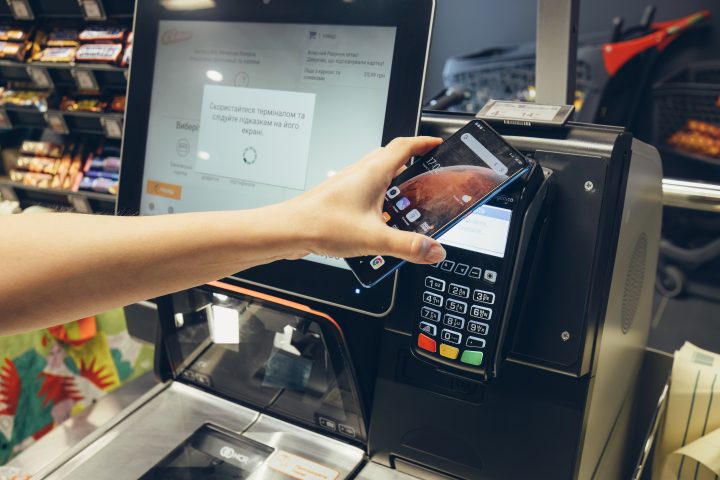Every time you tap your card or insert it into the terminal, you’re embarking on a fascinating journey through the digital realm. The seemingly mundane act unfolds a series of intricate processes, involving technology, security measures, and a dash of magic. Let’s take a vivid journey through what happens behind the scenes when your card meets the terminal.
In the intricate landscape of digital transactions, Visa and Mastercard stand as stalwart pillars, akin to industry leaders charting the course in the business of global payments. These entities, functioning as the primary conduits for financial transactions, orchestrate a seamless flow of information between acquiring banks, responsible for managing merchant accounts, and issuing banks, stewards of cardholder accounts. As transactions unfold, payment processors such as Adyen come into play, seamlessly integrating with acquiring banks to facilitate the nuanced exchange of data. This article delves into the sober dynamics of this financial ecosystem, shedding light on the roles of these entities and their collaborative efforts in transforming a seemingly routine transaction into a finely tuned operation of financial precision.
Roles and Collaborations: Visa and Mastercard, recognised as industry playmakers, function as strategic architects, delineating the protocols that govern the global payment network. Acquiring banks, serving as custodians of merchant accounts, ensure the smooth execution of transactions on behalf of businesses. Within this orchestrated play, payment processors like Adyen emerge as essential conduits, bridging the gap between merchants and a myriad of payment methods. While not traditional acquiring banks, these processors play a pivotal role in translating and facilitating secure communication between cards and terminals. The sober reality of this financial cooperation underscores the importance of each entity’s contribution to getting that payment across the line in split seconds.
Initiating the Magic – As you casually tap your card, you kickstart a cascade of events that begins with the contactless technology embedded in your card. A near-field communication (NFC) chip instantly communicates with the terminal, setting the stage for the enchanted journey ahead.
In a fraction of a second, secure dance data exchange commences. Your card shares encrypted information with the terminal, creating a digital handshake that verifies your identity and confirms the legitimacy of the transaction. It’s like a secret code, ensuring that only the rightful owner can release the funds stored within the card.
Once your card and the terminal have exchanged pleasantries, they enter the enchanted gateway of payment networks. Here, the information travels through a secure pathway, often powered by global payment networks like Visa, Mastercard, or others known as schemes. These networks act as the guardians of your transaction, ensuring it journeys safely to the next stage.
The journey takes a thrilling turn as your transaction enters the realm of authorisation. The payment network seeks approval from your issuing bank (where your funds are held), where a vigilant digital check assesses your account balance, credit limit, and other factors set by your bank. If the stars align, and your bank say yes, the authorisation is granted, and the magic proceeds.
A green light illuminates the transaction as “Approved”, and the magic is officially validated. Your card and the terminal rejoice in a harmonious symphony, signaling the successful transaction and you leave with your coffee or other item.
In the final act, the terminal choreographs the issue of receipts. Whether it’s a paper slip or a digital acknowledgment, a tangible memento is conjured to commemorate the transaction. Your card or your phone, having completed its quest, is ready for its next adventure.
The evolution of card payments over the last 30 years has been remarkable, transitioning from traditional methods to the present landscape, enriched by innovations like Apple Pay and Google Pay. Today, the simple act of tapping a card has become a seamless interaction facilitated by technology, reflecting the progression from conventional transactions to modern, digitised finance.
As we contemplate the journey of card payments over the last 30 years, it becomes crucial to acknowledge the expanding horizons of payment methods. The integration of wearable devices, such as watches, into the payment landscape symbolises a discernible shift towards more convenient and diversified payment options, thereby enhancing user experience and accessibility.
This transformation in payment methods is not just a technological evolution but also a race among the major players shaping the industry in what is known as “Big Data”. Observing the patterns of consumer behaviour and preferences has become a strategic focus for these players. The seamless transition from traditional transactions to modern, digitized finance has been guided by the pursuit of meeting consumer demands for efficiency and convenience.
Looking forward, the evolution of card payments is not just a technological advancement but a strategic response to the evolving landscape of consumer behaviour. The rise of blockchain technology presents new possibilities, prompting industry leaders to swiftly integrate its decentralised capabilities. Concurrently, open banking initiatives cater to the growing consumer demand for collaboration, enabling third-party providers to access financial data. In this race for innovation, legacy banks and traditional players must embrace these changes or risk becoming obsolete, underscoring the adapt-or-die imperative in the rapidly transforming world of consumer payments.
Looking ahead, the trajectory of card payments is poised for further transformation. The emergence of blockchain technology introduces both challenges and opportunities. Blockchain’s decentralised ledger system could reshape the industry’s landscape, potentially streamlining processes and enhancing security.
In this evolving landscape, major players in the payment industry face the dual challenge of adapting to emerging technologies like blockchain and navigating the impacts of open banking. The future holds a potential blend of efficiency gains and collaborative frameworks, creating a financial ecosystem that is both secure and adaptable to changing consumer preferences. As we move forward, the harmonisation of innovative technologies and regulatory frameworks will shape the next chapter in the evolution of card payments.
As the fintech sector anticipates a “tidal wave” of consolidation over the next 12 months, the landscape of the payment industry is poised for significant changes that cardholders and retailers alike should be attuned to. With a backdrop of a drying funding environment and market complexities, the fintech realm is witnessing larger players seeking to expand their reach through strategic mergers and acquisitions. For cardholders, this consolidation could mean a more streamlined and integrated payment experience, as established players acquire innovative startups to enhance their tech capabilities. Simultaneously, retailers may benefit from more robust payment solutions offered by well-capitalised fintechs, resulting in improved transaction efficiency and customer experiences. However, as the fintech industry undergoes this transformative phase, it remains to be seen which players will emerge as the leaders, navigating the challenges and opportunities presented by this dynamic era of consolidation.




